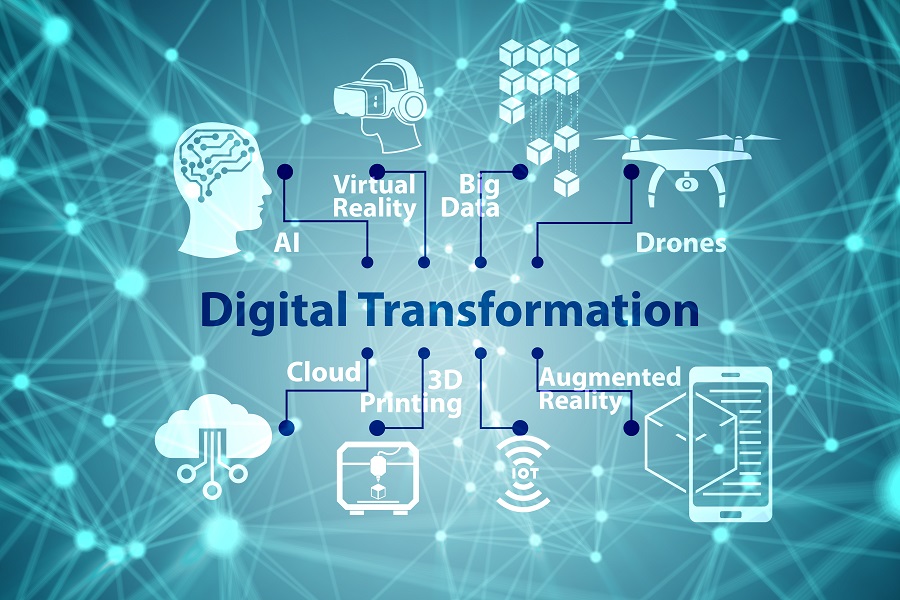In mid-March, we have catapulted quite abruptly out of our ordinary world. We were forced to develop new forms of cooperation very quickly to cope with the changed external conditions. The nickname of the year 2020 is “social distancing” although not “social” distance but the physical distance was meant:
Many people who were used to going to the office every day were equipped with laptops and cameras and had to work at home.
The question we want to pursue today is: “Will there be a return to “normal” everyday life or are we in the middle of a digital transformation that no one knows where it will end?
In our immediate environment, we are currently experiencing very different strategies for dealing with the current situation. Some of them have adapted very quickly to the changed conditions and, like us in Coverdale Austria, operate entirely digitally. Most of my colleagues are always discovering new possibilities offered by digital tools and at the same time have learned to use their energy in such a way that the “new” form of cooperation does not overtax their colleagues in terms of power.
Our team had already been working dislocated before Corona, but we too were not used to working together exclusively virtually. We switched to virtual collaboration from one day to the next and made some exciting learnings that we like to share:
The home office workplace:
Working with 2 – 3 screens for purely virtual collaboration is very helpful, especially when it comes to synchronous collaboration.
- On the first screen, virtual communication runs. We have made the experience that it is much more pleasant to communicate with others with an “open” camera. If the bandwidth is large enough, the videos are very sharp and give the impression of really sitting opposite each other. Depending on the purpose of communication, we mainly use Microsoft teams – for all interlocutors who also have an Office 365 account. For communication situations that require working in small groups, we use BigBlueButton or Zoom.
- We use the second screen to look up something if the research must happen.
- The third screen is usually a tablet, which we use when we work interactively with a split-screen – for example, with an electronic whiteboard. This is where we think MIRO has proved to be most effective.
Meeting structure:
On average, our regular meetings take about half the time of physical meetings. In the first few weeks, we attributed it more to the “new situation”. However, we have now introduced the informal rule that previous physical “one-hour” meetings are done in 30 minutes, so only 30-minute slots are scheduled.
Teamwork – joint projects/project management:
During the lockdown phase, we carried out several agile development projects and found that the organization of the projects via the “Planner-App” of Office 365 works very well. Asynchronous communication ran via the chat – if it had to be fast, it was communicated directly via teams using videotelephony.
Personal communication within the team:
Our team members are in different Austrian cities. Therefore, we were used to keeping in touch with each other by telephone, even before Corona. In my opinion, this is the most significant change. We hardly use the phone anymore but have shifted our communication almost entirely to videotelephony. Spontaneous calls or even planned little coordination calls between the office and the management are currently handled by teams, with the camera switched on.
Messenger services:
We used to use SMS and signal. This has practically come to a standstill since March. We only use the chat function in teams, as this app bundles all communication channels.
What will happen next?
Our office manager has discovered the advantages of the home office and will work about half of her weekly working hours in the home office until further notice. I think there will be many people who will find this new form of work very accommodating.
We have adapted our training offer so that we can continue to work fully virtually, even if we can work personally again. Most customers are still waiting until autumn and are currently only booking their programmes online. Considering the cost savings that virtual personnel development programs bring, we believe that this trend will also continue or become more robust. However, we think that face-to-face training will also “come back” again.
We will hold our quarterly meetings in person again in the future, at least every second time, to intensify the personal contact within the team. Still, we will evaluate this decision regularly depending on the current corona situation. We also believe in a trend here – secret meetings will continue to take place, but they will be experienced more consciously than before and will be held more cautiously.
We will continue to professionalize our virtual collaboration capability as we all believe that we will continue to work together more virtually than physically in the coming months. Therefore, the ability to work almost will also become an essential requirement for new colleagues in the future.
We believe that this trend will continue and that it will become a regular part of our everyday life in the future. The longer it takes before there is a vaccination, the more normal this form of communication will become, like using a smartphone.
We’re looking forward to the next 80 days…


Recent Comments